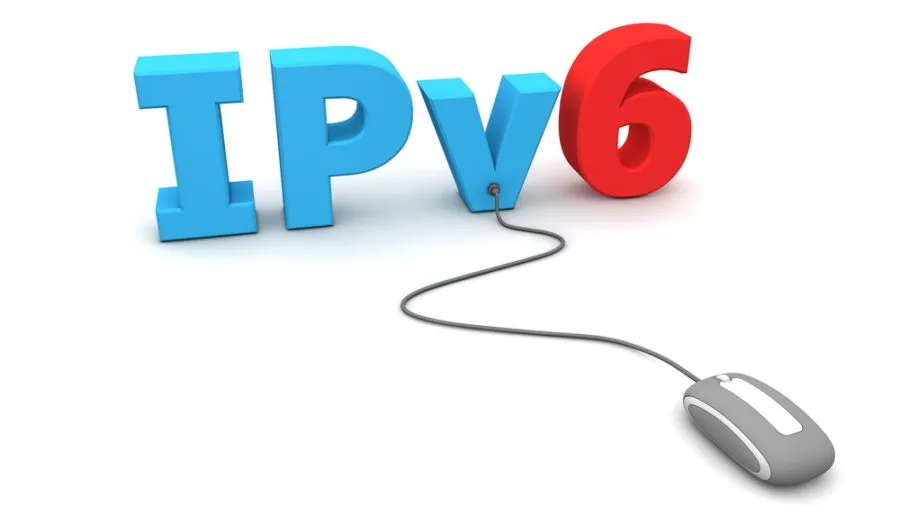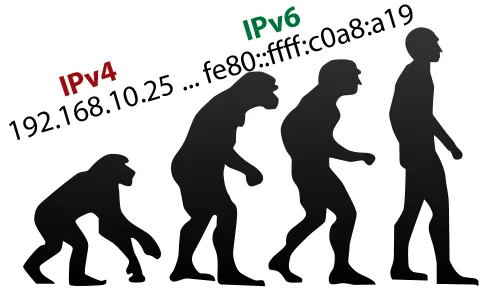Hay steemians, From today, I will post content in the field of my specialty on the blog. Hope to be welcomed.

Why do we need IPv6 protocol?
The answer is very simple. Because we need to communicate and the current system is not responsive to the growing technology. It's just enough to look at a variety of ways to fix the problem of the lack of IP addresses of version 4, which devotes valuable time to administrators and professionals in each project. For example, private addresses with the VLSM and NAT features are now used for this purpose. Every day, the number of people and devices that need to communicate with each other is increased, which can be seen as a good phenomenon. Because in the meantime, all people will be able to communicate with each other using a variety of communication channels. But the only way to connect people and devices to one another, IPv4, is to reach its capacity-limit, and in the coming years, taking into account the severity of that growth, will be out of its capacity limits.
IPv4, at least in theory, has provided us with 4 billion addresses that you know can not be used to address all of these devices. That means we can only use 250 million addresses in practice. Although CIDR and NAT have reduced the impact of this severe shortage of IPv4 addresses, we will see them diminishing in the coming years.
Only China with one and a half billion people and multiple organizations and companies need to have IP addresses. With a more general view, the world's current population is roughly equal to 7 billion, with an optimistic view that at least 10% of these people need to be contacted or in the near future! These are the truths It's bitter about the current version of the IP protocol, and that many people, in addition to having a computer for themselves, from other devices such as cell phones, printers, switches, routers, AP devices, etc., also inside the network They use. It's very clear that we need to have a way to connect the massive volume of devices for individuals and companies without interrupting any interference. Our recipe is the new IP version, IPV6.

Advantages of using IPv6
Does using IPV6 meet our needs? Is IPv6 worth upgrading from its current version ?? Questions like this can be raised. The answer to these questions is: Yes !! Not only does the new IP protocol address the problem of shortage of IP addresses, but it also provides us with an opportunity to reduce administrative burden and save time and money. Today's networks have different types of needs that were not paid attention to when designing IPv4. To cover the wide range of these needs, IPv4 has introduced a number of technologies that have resulted in no more complicated design, implementation, and troubleshooting of networks and services.
But experts in the design of IPv6 pay attention to all these needs and include the corresponding features inside the structure of IPv6. For example, IPSec and Mobility are new features. As it is called "Mobility", different people can move from one network to another without any inaccuracies in communicating. Other important features are also introduced with IPv6, which will have a significant impact on network performance improvements. For example, the number of fields in the IPv6 header is halved, with the size of each of them being 64 bits, resulting in a significant increase in network performance.
Most of the parts within the IPv4 Header have been removed in the IPv6 protocol, but the items can be reinserted in the Optional Extension header field that is placed after the standard header. One of the first and foremost ideas of IPv6 design was that it had a very large address space, so that it would not be difficult to allocate addresses to a variety of devices. Due to the structure of IPv6, Aggregation will also improve dramatically for URLs and thus routing operations.

Another feature of IPv6 is that you can assign multiple different addresses to networks or devices. Meanwhile, IPV6 has also expanded the use of Multicast communications. IPV4 has used a lot of Broadcast messages and thus causes problems with such messages. The broadcast storm phenomenon can be one of these problems with broadcast messages. In which a large part of the unused network bandwidth and network performance will be compromised. Another problem with broadcast messages is that all devices are secured after the message is sent to them.
The good news is that IPv6 uses multicast messages instead of Broadcast. In addition, two other types of messages are also used in IPv6:
- Unicast addresses: that are similar to IPv4 and destination only have an interface with the specified address. There is, of course, a technique where one unicast IPv6 can be assigned to multiple interfaces, clients or servers. Usually this technique is used to balance load balancing on used servers such as the mail server. The unicast addresses in IPv6 are divided into the following addresses:
- Global Unicast addresses
- Link-Local Unicast URLs
- Site-Local Unicast URLs
- Special Unicast addresses
- IPX Addresses & amp; NSAP
(Description of these addresses in the next article)
- Anycast addresses: Anycast addresses are currently set as destination addresses on the routers. Anycast addresses are obtained from Unicast addresses, and their range depends on the address range of the Unicast reference.
- IPv6 Anycast Adases are known as one to one of many addresses.
- All routers within an Anycast network share the same.
Now, if a packet is sent to the Anycast address, it arrives at the nearest Anycast address set on the router. This is done using the Anycast and Routing Metrics routing routing routines. When a packet is sent with the Anycast address Once it reaches the first and closest device, it will no longer seek other devices and the routing will be completed.